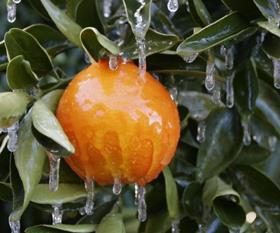
The volume of Californian citrus available for export this season is uncertain after December frosts ravaged crops.
Preliminary figures from industry organisation California Citrus Mutual (CCM) estimate one-third of the navel crop, valued at US$260m, was lost to the freeze.
Also impacted were 40 per cent of the mandarins – mainly to the later-maturing W Murcotts, and 20 per cent of the state’s lemons.
The majority of the lemon crop located in the desert and coastal growing regions suffered no damage.
CCM estimates total losses for the California citrus industry at around US$441m.
Cautious growers in the San Joaquin Valley, concerned about shipping suspect fruit long distances, were still cutting oranges, checking for internal damage, a month and a half after the cold temperatures subsided.
Subsequent mild weather in the San Joaquin Valley has growers concerned about their remaining fruit maturing too quickly.
“We’re shipping fruit for export now but barely covering all of the orders on the books,” Barney Evans of Sun Pacific Shippers told Fruitnet. “How much fruit and for how long the industry can continue to supply offshore markets remains to be seen, given the circumstances this season.”
Dan Kass of Paramount Citrus said: “We’re playing the export side conservatively and shipping about 50 per cent of what we’d normally be doing at this point of the season. It appears the rest of the industry is doing much the same.”
South Korea, the largest international market for California navels, typically begins importing fruit in significant volume by mid-February.With a shorted crop and rising Fob prices this season, Korea’s California navel imports will do well to equal last year’s volume of 71,000 cartons.
“Fob prices have been moving higher since the middle of January and should peak between US$18 to US$22, which has been the traditional resistance level for export markets,” said California citrus industry veteran Tom Wollenman.
Once the majority of the mid-season navel oranges have been harvested, the industry will turn to the later-maturing varieties, often referred to as summer navels, as well as valencias.
“The summer navels have definitely suffered some damage but just how much is still hard to detect,” said Wollenman. “The same is no doubt true for the valencias but when you are cutting fruit at this point in the season it’s not readily apparent. If the industry lost 50 per cent of the valencia crop, I don’t think too many would be shocked.”



